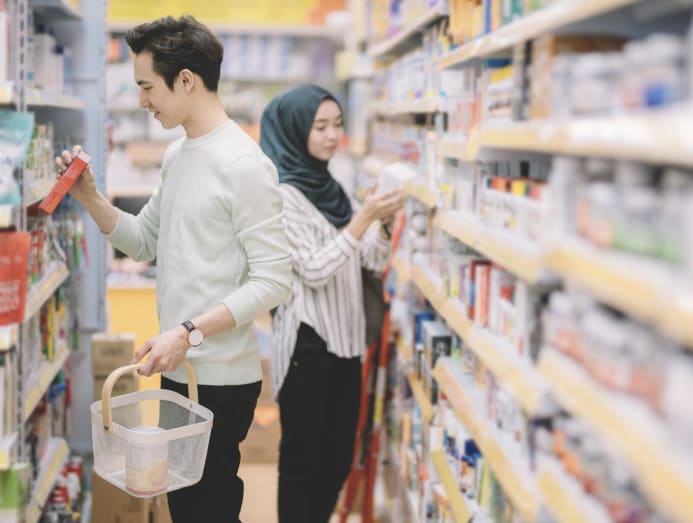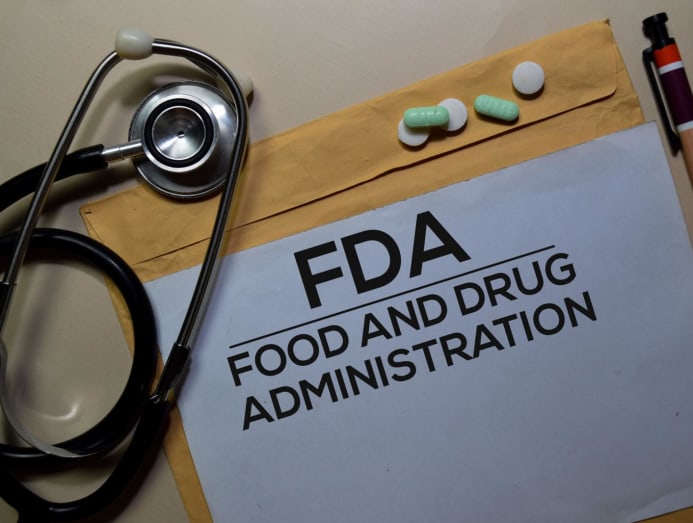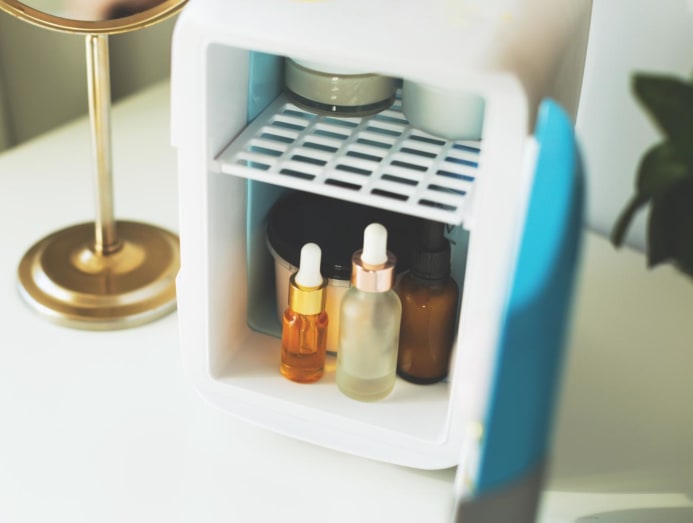Are pimple creams safe to use? What we know about the potentially cancer-causing ingredient found in some
A US report highlighted that “high levels” of benzoyl peroxide in acne treatment products can form benzene, a carcinogen. What can you do in the meantime while the authorities conduct further checks?

(Photo: iStock/MTStock Studio)

This audio is generated by an AI tool.
You may have left your teenhood behind years ago but maybe not pimples. And while you may now be better equipped to make them go away (facials, laser treatments and fancier skincare products), you can’t beat the convenience and cost of a store-bought pimple cream or gel.
But now, a report submitted by an independent laboratory to the US Food And Drug Administration (FDA) has highlighted that some acne-treatment products could give you cancer.
To be clear, the report was specifically referring to the “high levels” of benzoyl peroxide found in some prescription and over-the-counter products as the chemical is said to form benzene, a carcinogen, at high quantities.
If you’re now in your bathroom checking your tube of pimple cream, chances are, benzoyl peroxide is one of the key ingredients listed. And for good reason. It’s an effective twofer that kills the pimple-causing cutibacterium acnes (or C acnes for short) bacteria as well as helps pores to shed dead skin cells and reduce excess sebum.
So, should you throw out your pimple cream? Or swap it for a lower concentration of benzoyl peroxide? (But then, will it still work?) And for the really concerned folks, are there acne-zapping alternatives to benzoyl peroxide to switch to? We find out.

WHY IS A US LAB ADVOCATING TO RECALL SOME ACNE TREATMENT PRODUCTS?
In March this year, the US laboratory Valisure tested 175 prescription and store-bought acne treatment products, and found that they are “fundamentally unstable and can generate unacceptably high levels of benzene”.
To be more exact, the benzene levels that the US lab found were more than 800 times over the “conditionally restricted” limit of 2 parts per million (ppm) imposed by the FDA.
It gets worse. In a test that exposed a benzoyl peroxide product to high temperatures of over 65 degrees Celsius for 17 hours, the benzene level was about 1,270 times the threshold the US Environmental Protection Agency has for long-term inhalation exposure to benzene.
“High levels of benzene were not only detected inside benzoyl peroxide products, but also in the air around incubated benzoyl peroxide products, showing that benzene can leak out of some product packages and pose a potential inhalation risk,” noted the report.
Valisure even went so far as to file a petition with the FDA to recall the products, conduct an investigation and revise industry guidance. But what’s the situation in Singapore? We find out.

WHAT'S THE SITUATION IN SINGAPORE?
According to a spokesperson from Health Sciences Authority (HSA), over-the-counter pimple treatment products such as Clearasil and Proactive that were mentioned in the US report "are not subject to registration or approval from the HSA before they can be sold".
However, HSA has conducted sample testing of some of these products before and the levels of benzene detected are "within the recommended limit". "HSA will continue to review new medical research studies and assess their relevance to the local context," said the spokesperson.
"Should there be any safety concerns detected, HSA will take the necessary actions, including withdrawing unsafe products and alerting the public."
Moreover, newer studies, such as the ones based on the US National Health And Nutrition Examination Survey, did not find any association between benzoyl peroxide use and increased benzene levels in the blood of users, cited Adjunct Associate Professor Hazel Oon, a senior consultant and consultant-in-charge of the Acne Clinic at National Skin Centre.

A separate study that utilised the data of an over-50,000-strong cohort from TriNetX US Collaborative Network, a web-based patient database, also found similar outcomes. “Acne patients treated with benzoyl peroxide had no significant difference in the risk of lymphoma, leukaemia and internal malignancies compared to controls,” said Adj Assoc Prof Oon.
While that may be so, “further testing of benzoyl peroxide products from the FDA and other independent bodies is currently awaited”, she said, along with “the significance of routine benzoyl peroxide use on the skin on blood benzene levels and the risk of cancers, the type of formulation and storage”.
WHAT LEVEL OF BENZOYL PEROXIDE IS CONSIDERED “HIGH”?
This anti-acne ingredient can be found in concentrations between 2.5 per cent and 10 per cent – and 10 per cent is considered to be on the high end of the spectrum.
“I prescribe only 2.5 per cent or 5 per cent benzoyl peroxide to minimise skin irritation,” said dermatologist Dr Eileen Tan of Eileen Tan Skin Clinic & Associates. “However, I have seen patients purchase products with 15 per cent benzoyl peroxide from overseas and those have led to moderately severe skin rashes.”
When it comes to benzoyl peroxide, a higher concentration doesn’t mean better. In fact, research suggests that 5 per cent and 10 per cent concentrations are not significantly more effective than 2.5 per cent at treating acne.
It is also not a good idea to start off with a high concentration as it can sometimes lead to skin dryness, redness, irritation and excessive peeling, advised Dr Tan.

WHAT ABOUT THE STORAGE TEMPERATURE? SHOULD WE KEEP PIMPLE CREAMS IN THE FRIDGE?
You do want to play it safe. “To avoid potential degradation to benzene, benzoyl peroxide topicals should be stored in the refrigerator or below room temperature,” said Adj Assoc Prof Oon. “Products which have been exposed to temperatures above room temperature or expired should be discarded.”
HSA has the same message when it comes to storing your tube of pimple cream: Keep in a cool and dry place away from heat or direct sunlight as recommended on the product's label. "Benzoyl peroxide products should not exceed the limit of 2ppm for benzene as recommended in the International Council for Harmonisation guidelines for pharmaceuticals for human use," said HSA's spokesperson.
WHAT ARE THE ALTERNATIVES TO BENZOYL PEROXIDE?
You’ll be glad to know that these five alternative ingredients can deliver additional benefits that target post-acne scars and hyperpigmentation as well as skin ageing:
1. RETINOIDS AND RETINOLS
Retinoids and retinols are derived from Vitamin A, and generally work by reducing inflammation and blockage in the pores. Retinoids are prescribed as they are stronger than store-bought retinols.
Popular retinoid options include adapalene, tretinoin and the newest, trifarotene, said Dr Tan. The bonus benefit from trifarotene is that it has been shown to be effective for both face acne and bacne, said Dr Joyce Lim, a consultant dermatologist from SOG Health.
Whether it's retinoids or retinols, they both have the potential to irritate skin as they act like a chemical scrub, said Dr Lim. So, if you’re using either one, it’s best to avoid other scrubs of any kind, other retinoids and retinols, exfoliating acids such as AHAs or BHAs, and strong toners to reduce skin irritation. Also, retinoids and retinols should not be used by pregnant women.
And don't forget the adage when using retinoids or retinols: Use retinoids or retinols only at night and wear SPF in the day.

Recommended concentrations:
- Tretinoin: Start with 0.025 per cent every other night, and eventually increase to 0.05 per cent. May cause skin peeling and irritation, and sometimes, a flare in the initial stage, cautioned Dr Lim.
- Adapalene: 0.1 per cent for over-the-counter use, and 0.3 per cent for prescriptions. The latter has been shown to prevent and improve acne scars, said Dr Lim.
- Trifarotene: Only in 0.005 per cent, gel form. May also cause a flare in the initial stage like tretinoin, cautioned Dr Lim.
Other benefits:
- Tretinoin: May reduce post-pimple pigmentation and stimulate collagen production to help with superficial acne scars, said Dr Lim.
- Adapalene: Can be used with niacinamide to soothe irritation, and hyaluronic acid to help with hydration. At 0.3 per cent, it may stimulate collagen production, improve skin texture and reduce fine lines, said Dr Lim.
- Trifarotene: Has some skin-lightening effects. During treatment, it can reduce post-acne hyperpigmentation and scars.

2. AZELAIC ACID
It may have the word “acid” but this is no hydroxy acid like an AHA or BHA (more on those later). Instead, it is a member of the dicarboxylic acid family, said Dr Tan, and has both antibacterial and anti-inflammatory properties.
“Azelaic acid’s main advantage is that it can be integrated into the skincare of individuals with sensitive skin types such as acne rosacea,” said Dr Tan, and is even suitable for pregnant and breastfeeding women.
Recommended concentration: From 10 per cent to 20 per cent as a prescription-only product in Singapore, said Dr Lim.
Other benefits: Azelaic acid can also reduce acne scarring and hyperpigmentation by inhibiting the hyperpigmentation-inducing enzyme tyrosinase, said Dr Tan.
3. HYDROXY ACIDS
Alpha hydroxyl acids (AHAs) and beta hydroxyl acids (BHAs) come to mind when we talk hydroxy acids. But how are they different?
Both acids treat acne by exfoliating dead skin cells, reducing inflammation and stimulating skin renewal, said Dr Tan. The difference is, “BHAs are milder than AHAs and have additional anti-inflammatory properties,” she said.
One way to tell the two apart is to remember the “A” in AHAs is for anti-ageing (wrinkles, uneven skin tone and hyperpigmentation), whereas the “B” in BHAs is for blackheads – and other pore-clogging issues including acne, whiteheads and oily T-zone.

When it comes to AHAs, glycolic acid and lactic acid are the two commonly used ones for acne management, said Dr Tan. “Glycolic acid has the smallest molecular weight of all the AHAs, hence, allowing faster penetration into the skin.” Lactic acid, she said, delivers hydrating benefits.
For BHAs, salicylic acid is the favourite for treating acne, said Dr Tan. “Salicylic acid is a gentle exfoliant that dissolves sebum and dead skin cells, reduces comedones, and also reduces skin’s sebum production.”
She added that it is important to apply a broad-spectrum sunscreen when using AHAs or BHAs. “Their exfoliating effects may increase photosensitivity and sun damage without the proper protective measures.”
Recommended concentrations:
- AHAs: From 5 per cent to 15 per cent in topical creams, lotions or gels. “Higher concentrations such as 15 per cent to 70 per cent are used in chemical peels to treat acne,” said Dr Lim.
- BHAs: From 0.5 per cent to 2 per cent. Higher concentrations can be irritating and are generally reserved for spot treatments, said Dr Lim.
Other benefits:
- AHAs: These acids also improve skin tone, texture and brightness, said Dr Lim. “They help fade acne scars and reduce signs of ageing by boosting collagen production.”
- BHAs: Salicylic acid can improve skin’s overall texture by reducing the appearance of large pores and promoting smoother skin, according to Dr Lim. “It is useful in treating oily and acne-prone skin.”

4. TOPICAL ANTIBIOTICS
Topical erythromycin used to be able to control acne-causing bacteria just fine. But since the emergence of a highly resistant C acnes strain, erythromycin has been taken off the board, explained Dr Lim. “The common antibiotic used now is topical clindamycin.”
Because of this concern of bacterial resistance, topical antibiotics are usually not used alone, explained Dr Lim, but often prescribed with retinoids or benzoyl peroxide. And the results are far better, too.
For instance, 1 per cent clindamycin and 0.1 per cent adapalene were found to be superior to just 1 per cent clindamycin alone, said Dr Tan, citing a 12-week randomised controlled trial involving 249 patients with mild to moderate acne.
Recommended concentration: 1 per cent clindamycin in gels, creams, solutions and lotions. “It is used on localised lesions and not over the entire face or back,” said Dr Lim.
Other benefits: Topical antibiotics may help to reduce perceived skin oiliness in a gel or solution form.
5. NIACINAMIDE
This Vitamin B3 helps to regulate sebum production and strengthen the skin barrier to prevent future breakouts, said Dr Lim.
Recommended concentration: 2 per cent to 5 per cent concentrations are effective for treating acne, said Dr Lim. “Higher concentrations, such as 10 per cent, can be used for stronger effects but may cause irritation in some people.”
Other benefits: “Niacinamide also reduces hyperpigmentation, improves skin elasticity, and has anti-ageing benefits by supporting collagen production. It also helps with redness,” said Dr Lim.






